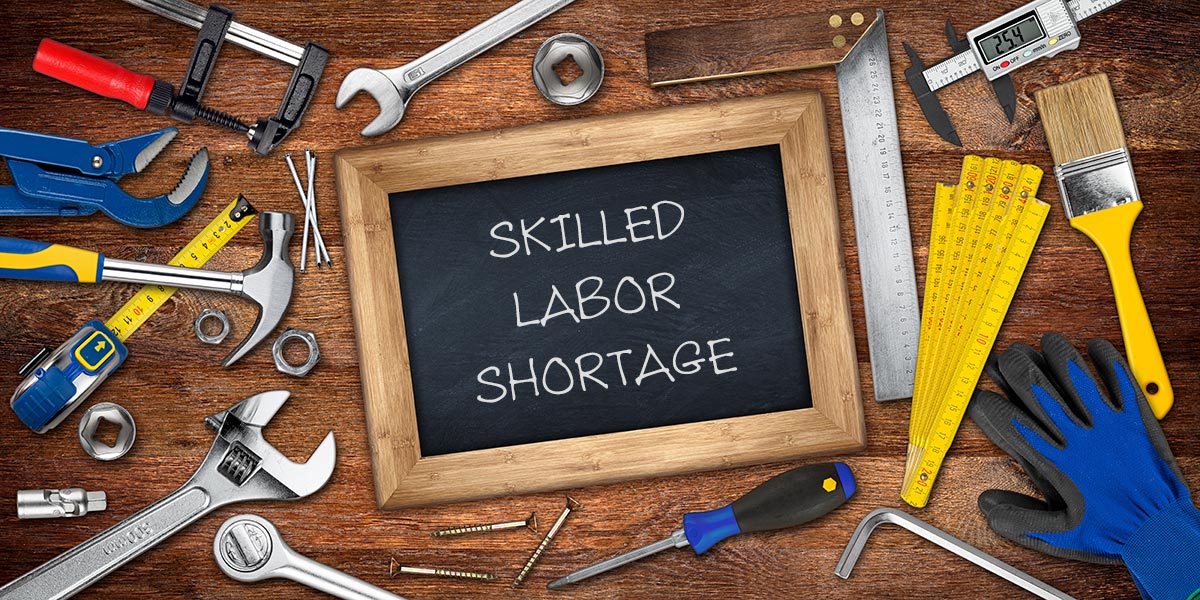In January of 2019, the U.S. Department of Labor issued a report that found 6.5 million Americans were looking for work in a variety of skilled trade segments. Their chances of finding gainful employment were excellent: The same report found 7.6 million such positions available.
The skilled labor shortage poses a serious challenge, and not just for employers, who may have to look longer and harder and pay more to attract and retain qualified workers.
A recent Deloitte study backed the DOL’s findings. Analysts calculated that 2.4 million skilled labor positions will have gone unfilled between 2018 and 2028, leaving $2.5 trillion in unpaid wages on the table — a massive economic impact.
The allure of blue collar jobs has diminished in a society that, of late, puts a heavy emphasis on earning a four-year college degree. As Baby Boomers exit the workforce, there are fewer and fewer trained and certified plumbers, electricians, HVAC technicians, and carpenters to replace them.
To help address the shortage at the grassroots level, organizations like the Hourglass Foundation are stepping up to introduce more young workers to the job prospects and competitive incomes skilled labor positions offer.
That Will Cost You
Labor shortages cost employers in a number of ways. They may have to pay more to attract and keep qualified workers. They may lose clients whose projects they are too understaffed to complete.
In a recent survey, the National Association of Home Builders found a staggering 81% of its members said unfilled positions caused them to delay the completion of a project. NAHB analysts pointed out that the late-2000s housing market downturn spurred by the Great Recession drove about 1.5 million workers out of the industry.
Accordingly, since 2010, skilled trades have led the nation in job vacancies, according to semiannual surveys conducted by Manpower Group.
Education is at the heart of the issue. Encouraged from an early age to earn a college degree, younger generations are spurning the more immediate job opportunities offered by trade schools to enroll in four-year programs.
The result? In 2019, total outstanding U.S. student loan debt exceeded the $1 trillion mark with no signs of slowing. How many of those 44 million-plus borrowers could have benefited from learning a trade and earning income while their peers were still borrowing?
The Hourglass Approach
In 2017, Ron and Chad Shoemaker founded the Hourglass Foundation, the philanthropic arm of the father and son’s asset management company, Hourglass Management Corp. (Flexco Fleet Services, Innovative Funding Services). In addition to raising funds for philanthropic giving, their primary goal was to fund trade school scholarships and community college programs.
They do so primarily by accepting monetary donations. But individuals and companies also can support Hourglass’ cause by donating a vehicle online. It’s a quick, simple, three-step process, and the directors use their asset management expertise to maximize the donated unit’s return in the wholesale market.
Driven by the belief that “there is more than one path to a successful life and career,” Chad Shoemaker said the Hourglass Foundation is making a difference one worker at a time.
“And when they leave school, they leave prepared to compete in a market that will welcome them with countless job opportunities and competitive pay. Many of those workers will go on to become supervisors, managers, executives and owners. And they will prove a four-year college degree is not the only path to success.”






